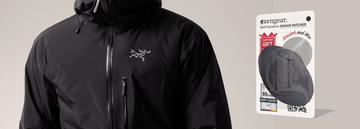Understanding Overstriding in Running: Causes, Consequences, and How to Avoid It
by Emily Jannet on Oct 16, 2023
In the world of fitness and wellness, running stands as a testament to the human spirit's endurance and determination. Whether you're a seasoned athlete or someone taking their first steps towards a healthier lifestyle, running transcends boundaries and brings people together. Yet, like any discipline, running has its nuances, and one that frequently hinders progress is overstriding. This article sets out to unravel the concept of overstriding, delving into its meaning, the factors that often lead to it, the potential drawbacks it carries, and the strategies to sidestep this common pitfall, ensuring your running journey is smooth and injury-free.
What is Overstriding?
Overstriding, in the context of running, refers to the act of taking excessively long steps or extending your leg too far in front of your body when your foot makes contact with the ground. Essentially, it's when your foot lands too far ahead of your center of mass. This results in an inefficient running stride that can lead to various issues, both immediate and long-term.
Causes of Overstriding
Several factors can contribute to overstriding:
Lack of Awareness: Many runners overstride simply because they are not aware of their running form. Running posture often deteriorates when fatigue sets in, making it crucial to maintain mindfulness throughout your run.
Trying to Increase Speed: Some runners believe that taking longer strides will help them run faster. While it may seem logical, it often results in inefficiency and discomfort.
Poor Core Strength: Weak core muscles can lead to instability, causing your legs to reach out in front to maintain balance.
Inadequate Hip Flexibility: Limited hip mobility can restrict your range of motion, making it difficult to maintain a proper stride.
Consequences of Overstriding
Overstriding can lead to a range of issues for runners, including:
Increased Risk of Injury: Over time, overstriding can put excessive stress on your muscles, joints, and tendons, increasing the risk of injuries such as shin splints, knee pain, and Achilles tendonitis.
Reduced Efficiency: Longer strides may feel like they're helping you cover more ground, but they often result in wasted energy, leading to quicker fatigue.
Slower Performance: Contrary to the belief that longer strides make you faster, overstriding can actually slow you down as your body works harder to maintain balance and control.
Poor Running Economy: Overstriding reduces your running economy, meaning you'll burn more energy for the same distance covered.
How to Avoid Overstriding
Avoiding overstriding is essential for maintaining a healthy and efficient running form. Here are some tips to help you prevent overstriding:
Focus on Cadence: Aim for a cadence (stride rate) of around 170-180 steps per minute. A higher cadence encourages shorter, quicker strides, which can help reduce overstriding.
Run Tall: Maintain an upright posture with a slight lean forward from your ankles. This will naturally encourage a more efficient stride.
Land Midfoot: Try to land with your foot underneath your hips, rather than reaching out in front. This will ensure a more balanced and efficient stride.
Strengthen Your Core: Incorporate core-strengthening exercises into your routine to improve stability and balance.
Work on Hip Mobility: Stretch and strengthen your hip flexors and adductors to improve your hip mobility, allowing for a more natural stride.
Listen to Your Body: Pay attention to how your body feels during a run. If you notice any discomfort or pain, it may be a sign of overstriding.
Conclusion
Overstriding is a common running mistake that can lead to a range of issues, from increased risk of injury to reduced performance. By understanding the causes of overstriding and taking steps to correct it, you can enhance your running form, reduce the risk of injuries, and improve your overall running experience. Remember that proper running form takes practice, so be patient with yourself and stay committed to improving your stride. Your body will thank you for it in the long run.





